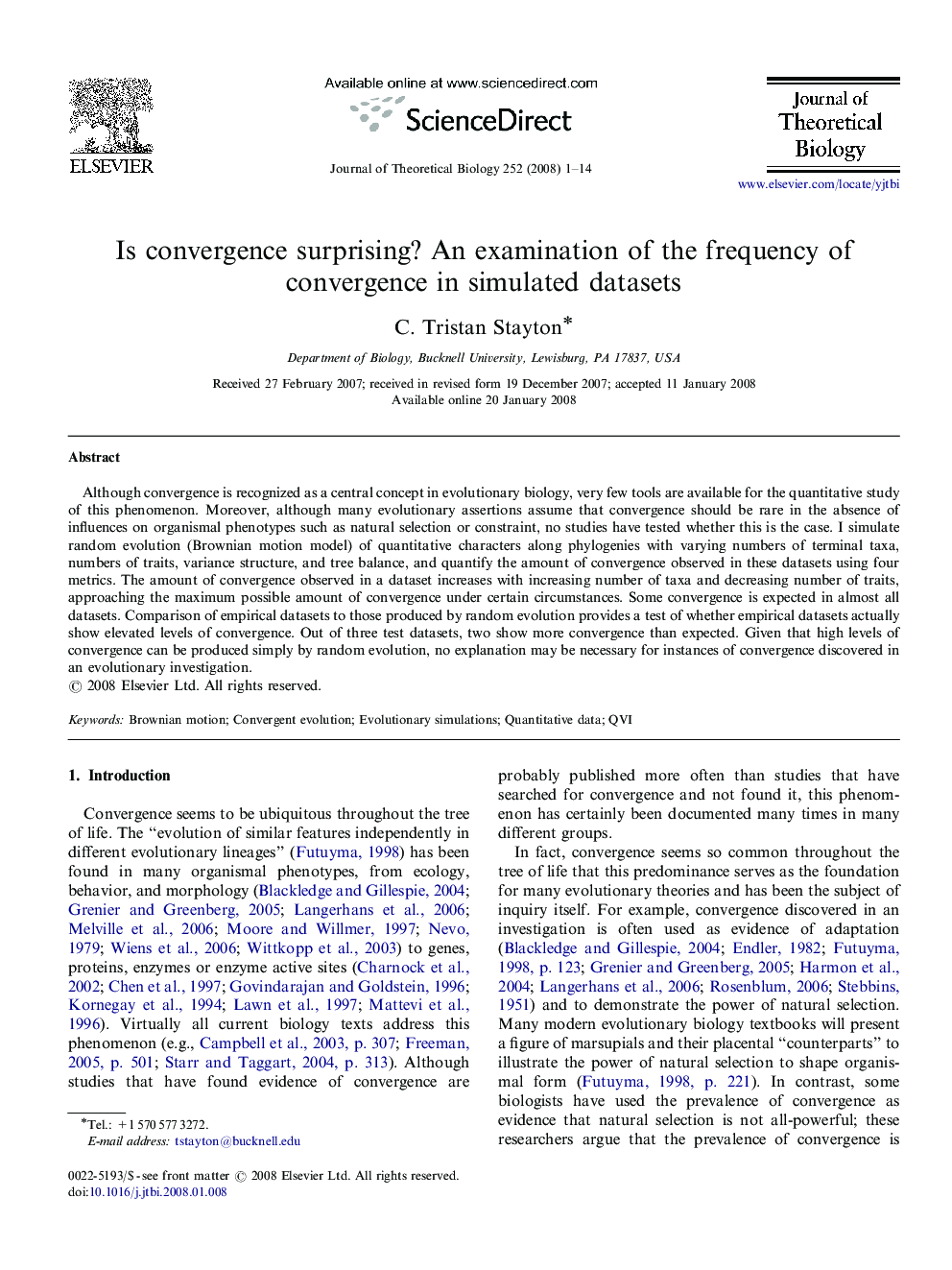| Article ID | Journal | Published Year | Pages | File Type |
|---|---|---|---|---|
| 4498339 | Journal of Theoretical Biology | 2008 | 14 Pages |
Although convergence is recognized as a central concept in evolutionary biology, very few tools are available for the quantitative study of this phenomenon. Moreover, although many evolutionary assertions assume that convergence should be rare in the absence of influences on organismal phenotypes such as natural selection or constraint, no studies have tested whether this is the case. I simulate random evolution (Brownian motion model) of quantitative characters along phylogenies with varying numbers of terminal taxa, numbers of traits, variance structure, and tree balance, and quantify the amount of convergence observed in these datasets using four metrics. The amount of convergence observed in a dataset increases with increasing number of taxa and decreasing number of traits, approaching the maximum possible amount of convergence under certain circumstances. Some convergence is expected in almost all datasets. Comparison of empirical datasets to those produced by random evolution provides a test of whether empirical datasets actually show elevated levels of convergence. Out of three test datasets, two show more convergence than expected. Given that high levels of convergence can be produced simply by random evolution, no explanation may be necessary for instances of convergence discovered in an evolutionary investigation.
